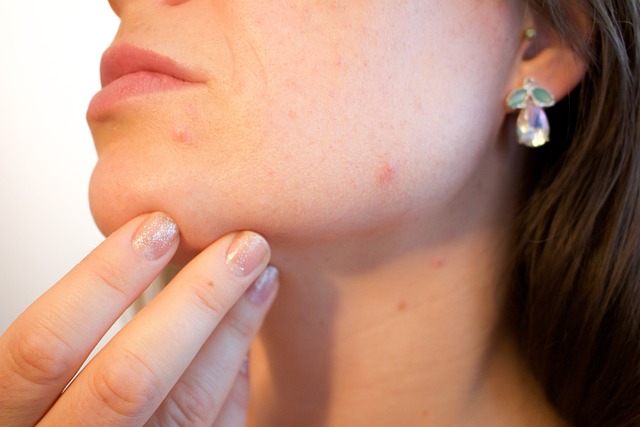To maintain hygiene and improve appearance, people use a range of skin care, cosmetic, and personal care products on a daily basis. Nevertheless, a lot of these products include chemicals that could be harmful to your health. Making educated decisions and protecting wellbeing require an understanding of these dangerous ingredients.
Common Harmful Chemicals in Personal Care Products
Several chemicals frequently found in personal care items have been linked to adverse health effects. Below is a table highlighting some of these substances, their common uses, and associated health concerns:
| Chemical | Commonly Found In | Potential Health Risks |
|---|---|---|
| Phthalates | Fragrances, nail polishes | Endocrine disruption, reproductive issues |
| Parabens | Shampoos, moisturizers | Hormone disruption, potential breast cancer link |
| Formaldehyde | Hair straightening treatments | Carcinogenic, skin irritation |
| Lead | Lipsticks, eyeliners | Neurotoxicity, developmental delays |
| Mercury | Skin lightening creams | Neurological and kidney damage |
| Triclosan | Antibacterial soaps, toothpaste | Hormone disruption, antibiotic resistance |
| Oxybenzone | Sunscreens | Hormone disruption, potential cellular damage |
| Toluene | Nail polish, hair dyes | Respiratory issues, developmental harm during pregnancy |
Health Implications of Toxic Ingredients
Exposure to these chemicals can lead to various health issues:
-
Endocrine Disruption: Chemicals like phthalates and parabens can interfere with hormone function, potentially leading to reproductive problems and developmental abnormalities.
-
Carcinogenicity: Ingredients such as formaldehyde and certain heavy metals are classified as carcinogens, meaning they have the potential to cause cancer.
-
Neurological Damage: Heavy metals like lead and mercury can adversely affect the nervous system, leading to cognitive impairments and developmental delays, especially in children.
-
Allergic Reactions and Skin Irritation: Substances like triclosan and toluene may cause skin irritation, allergic reactions, and respiratory issues.
Vulnerable Populations
Certain groups are more susceptible to the adverse effects of these chemicals:
-
Pregnant Women and Developing Fetuses: Exposure to endocrine disruptors can affect fetal development and may lead to birth defects or developmental disorders.
-
Infants and Children: Due to their developing systems, children are more vulnerable to neurotoxic effects of heavy metals and other harmful substances.
-
Individuals with Pre-existing Conditions: Those with allergies, asthma, or skin conditions may experience exacerbated symptoms when exposed to certain chemicals.
Regulatory Landscape
Regulations regarding the use of these chemicals in personal care products vary globally:
-
United States: The Food and Drug Administration (FDA) has limited authority over cosmetic ingredients, leading to less stringent regulations compared to other regions.
-
European Union: The EU has banned or restricted over 1,300 chemicals in cosmetics, reflecting a more precautionary approach to consumer safety.
-
Other Countries: Nations like Canada and Japan have their own regulatory frameworks, often aligning more closely with the EU’s stringent standards.
Tips for Consumers to Avoid Harmful Chemicals
To minimize exposure to potentially harmful ingredients, consider the following strategies:
-
Read Ingredient Labels: Familiarize yourself with common toxic substances and scrutinize product labels before purchasing.
-
Choose Fragrance-Free Products: Fragrances can contain undisclosed chemicals; opting for fragrance-free items reduces exposure.
-
Use EWG’s Skin Deep Database: This resource provides safety ratings for personal care products, aiding in informed decision-making.
-
Opt for Certified Products: Look for certifications indicating products are free from specific harmful chemicals.
-
Limit Product Use: Reducing the number of personal care products used daily can decrease overall chemical exposure.
Key Takeaways
-
Awareness is Crucial: Understanding the potential risks associated with certain chemicals empowers consumers to make safer choices.
-
Regulations Vary: Global disparities in cosmetic regulations mean consumers should stay informed about the standards in their region.
-
Proactive Measures: By reading labels, choosing certified products, and utilizing resources like safety databases, individuals can significantly reduce their exposure to harmful substances.
Frequently Asked Questions (FAQ)
Q1: Are natural or organic products always free from harmful chemicals?
A1: Not necessarily. While natural and organic products may have fewer synthetic chemicals, it’s essential to read labels, as they can still contain potentially harmful substances.
Q2: How can I verify if a product is safe?
A2: Utilize databases like EWG’s Skin Deep, consult product certifications, and research individual ingredients to assess product safety.
Q3: Are there specific brands that are universally safe?
A3: Safety varies by product and formulation rather than brand alone. It’s advisable to evaluate each product individually.
Q4: What should I do if I experience a reaction to a personal care product?
A4: Discontinue use immediately, consult a healthcare professional, and report the reaction to relevant regulatory authorities.
Q5: Is it necessary to replace all my personal care products?
A5: Gradually replacing products, starting with those used most frequently or on large skin areas, can effectively reduce exposure without causing undue waste or expense.
Being informed about the chemicals present in skin care, cosmetics, and personal care products


